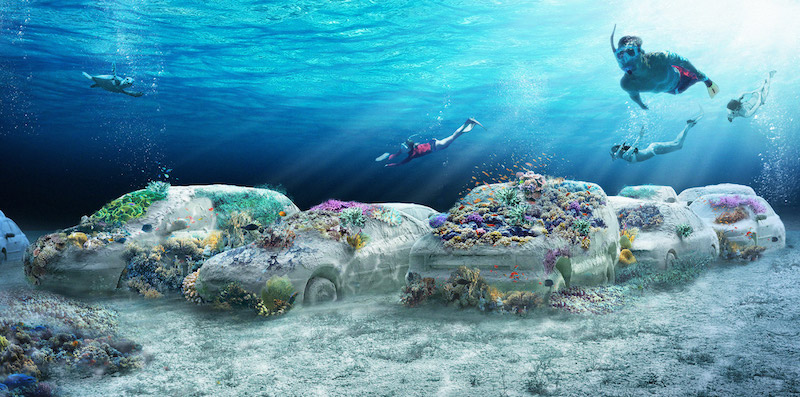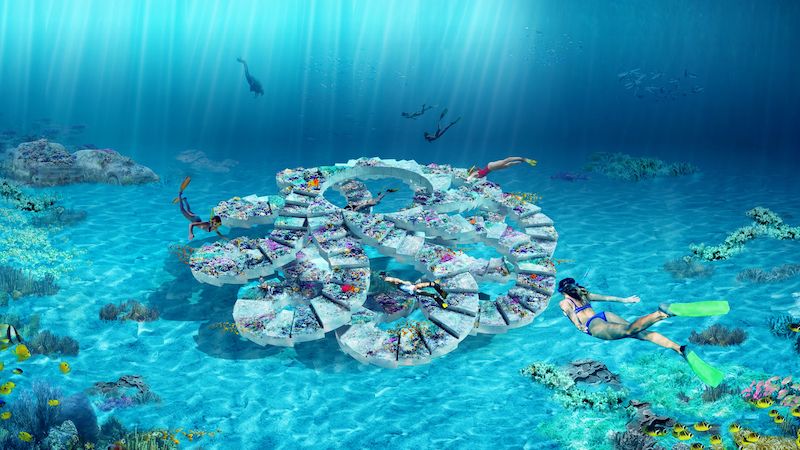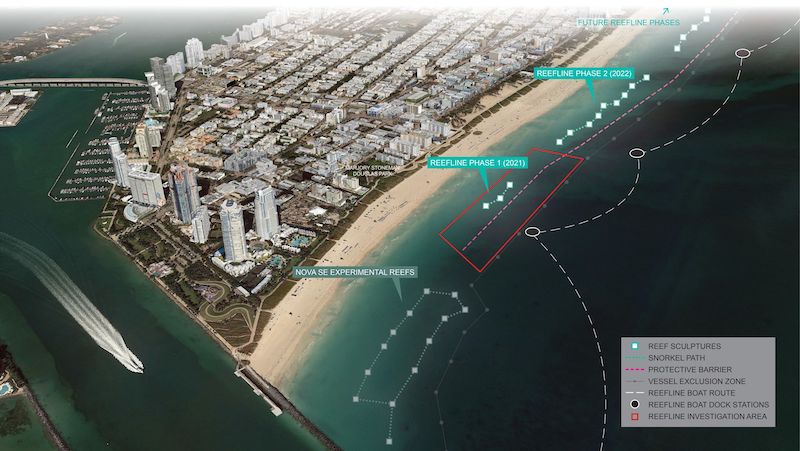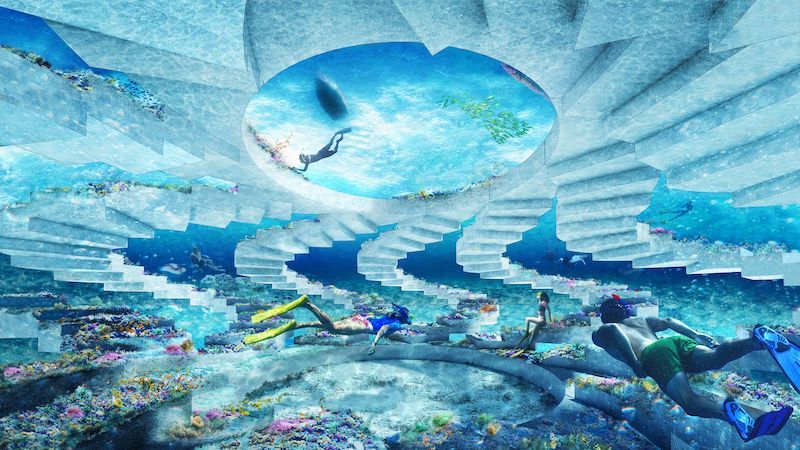The ReefLine will be a new seven-mile-long underwater public sculpture park, snorkel trail, and artificial reef located off Miami Beach’s shoreline. OMA is collaborating with a team of marine biologists, researchers, architects, and costal engineers to design the project’s master plan and a distinct sculpture within it.
OMA has designed a geometric, concrete modular unit that can be deployed and stacked from South Beach to the north, following the topography of the sea bed. The living breakwater is the connective tissue for the overall master plan and will be punctuated by a series of site-specific installations.

The project will be completed in phases. The first mile is slated to open in December 2021 with permanent installations by Argentine conceptual artist Leandro Erlich and Shohei Shigematsu of OMA. Erlich will create Concrete Coral, an installation that will reframe cars and trucks as new vehicles for environmental change.

OMA/Shigematsu’s sculpture explores the nature of weightlessness underwater. A series of sinuous spiral stairs creates a three-dimensional structure reminiscent of marine life. The organic form provides layered zones for coral reef growth and interstitial spaces for exploration. The stairs rotate around a central forum for underwater gathering and activities.
In addition to the artistic qualities, The ReefLine will also provide a critical habitat for endangered reef organisms, promoting biodiversity and enhancing coastal resilience.


Related Stories
Healthcare Facilities | May 27, 2015
Rochester, Minn., looks to escape Twin Cities’ shadow with $6.5 billion biotech development
The 20-year plan would also be a boon to Mayo Clinic, this city’s best-known address.
BIM and Information Technology | May 26, 2015
Lego-like model building kit was created by an architect for architects
Arckit, as the system is called, was designed to a 1:48 scale, making it easy to create models accurate to the real-life, physical building projected.
BIM and Information Technology | May 26, 2015
Moore's Law and the future of urban design
SmithGroupJJR's Stephen Conschafter, urban designer and planner, discusses his thoughts on the 50th anniversary of Moore's Law and how technology is transforming urban design.
Architects | May 26, 2015
AIA design competition creates portable, temporary housing for the homeless
The winning design from the AIA's "A Safe Place" competition was built at the AIA convention in Atlanta and later donated to a local non-profit partner.
BIM and Information Technology | May 21, 2015
How AEC firms should approach BIM training
CASE Founding Partner Steve Sanderson talks about the current state of software training in the AEC industry and common pitfalls in AEC training.
Architects | May 20, 2015
Architecture billings remain stuck in winter slowdown
Regional business conditions continue to thrive in the South and West
University Buildings | May 19, 2015
Special Report: How your firm can help struggling colleges and universities meet their building project goals
Building Teams that want to succeed in the higher education market have to help their clients find new funding sources, control costs, and provide the maximum value for every dollar.
University Buildings | May 19, 2015
Renovate or build new: How to resolve the eternal question
With capital budgets strained, renovation may be an increasingly attractive money-saving option for many college and universities.
University Buildings | May 19, 2015
KU Jayhawks take a gander at a P3 development
The P3 concept is getting a tryout at the University of Kansas, where state funding for construction has fallen from 20% of project costs to about 11% over the last 10 years.
Multifamily Housing | May 19, 2015
Zaha Hadid unveils 'interlocking lattice' design for luxury apartments in Monterrey, Mexico
Hadid's scheme was inspired by the Mexican tradition of interlocking lattice geometries.
















